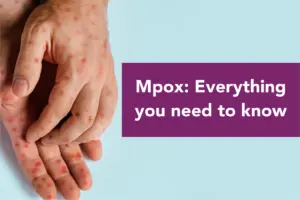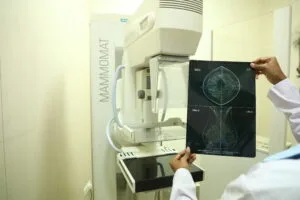Importance of HPV DNA Testing in Cervical Cancer Screening

In India, cervical cancer accounts for 9.4% of all cancers.
1,23,907 new cases of cervical cancer were detected in 2020.
Suburban Diagnostics conducted a 5-year study on pap smears done using liquid-based cytology (PAP SurePath LBC) and analyzed whether there was an association between the diagnosis and the presence or absence of HPV DNA in the same samples.
The results were as follows:
| PAP LBC Report | Percentage |
| NILM | 96.42% |
| ASC-US | 2.29% |
| ASC-H | 0.18% |
| LSIL | 0.59% |
| HSIL | 0.20% |
| SCC | 0.12% |
| Other (atypical glandular or endometrial cells) | 0.18% |
| TOTAL | 100% |
| PAP LBC Report | HPV DNA | |
| HPV DNA Detected | HPV DNA Not Detected | |
| NILM | 4.18% | 95.82% |
| ASC-US | 15.32% | 84.68% |
| ASC-H | 22.22% | 77.78% |
| LSIL | 35.71% | 64.29% |
| HSIL | 70.00% | 30.00% |
| SCC | 66.67% | 33.33% |
| Other (atypical glandular or endometrial cells) | 22.22% | 77.78% |
The prevalence of HPV infection among women with normal cervical cytology was found to be 4.18%.
Analysis revealed a statistically significant association between HPV DNA and diagnosis on PAP LBC (p<0.001).
Reports of ASC-H, ASC-US, HSIL, LSIL, and SCC were higher in cases where HPV DNA was detected.
However, on deeper analysis, we found that knowing only the PAP LBC report would not help us in predicting whether the patient has an HPV infection.
In fact, having the knowledge of a patient’s PAP LBC report will lead to only a 2.9% decrease in error in our ability to predict the HPV status of the patient.
If HPV DNA is detected, genotyping should be done to identify the HPV strain (high-risk strains include: 16, 18, 31, 33, 34, 35, 39, 45, 51, 52, 56, 58, 59, 66, 68, and 70). High-risk type HPV-16 and 18 contribute over 70% of all cervical cancer cases.
Most guidelines also recommend primary HPV screening or co-testing:
| RCOG | ACOG | FOGSI |
| Screening to start from 25 years of age. | Screening to start from 21 years of age. | Screening to start from 25 years of age. |
| Primary HPV screening from 25-64 years. Every 3 years from 25-49 years and every 5 years from 50-64 years. | For women between 30-65 years, primary HPV DNA testing or co-testing every 5 years or cytology alone every 3 years. For women in the 21-29 years of age group, only cytology will suffice. | Primary HPV DNA testing or cytology from the age of 25 years. Primary HPV DNA testing or co-testing every 5 years for women between 30-65 years of age group. |
TAKE HOME MESSAGE:
Co-testing or HPV DNA testing SHOULD be the preferred method of screening.
Doing a PAP LBC by itself is not enough.
#unburdenhealthcare with us.



